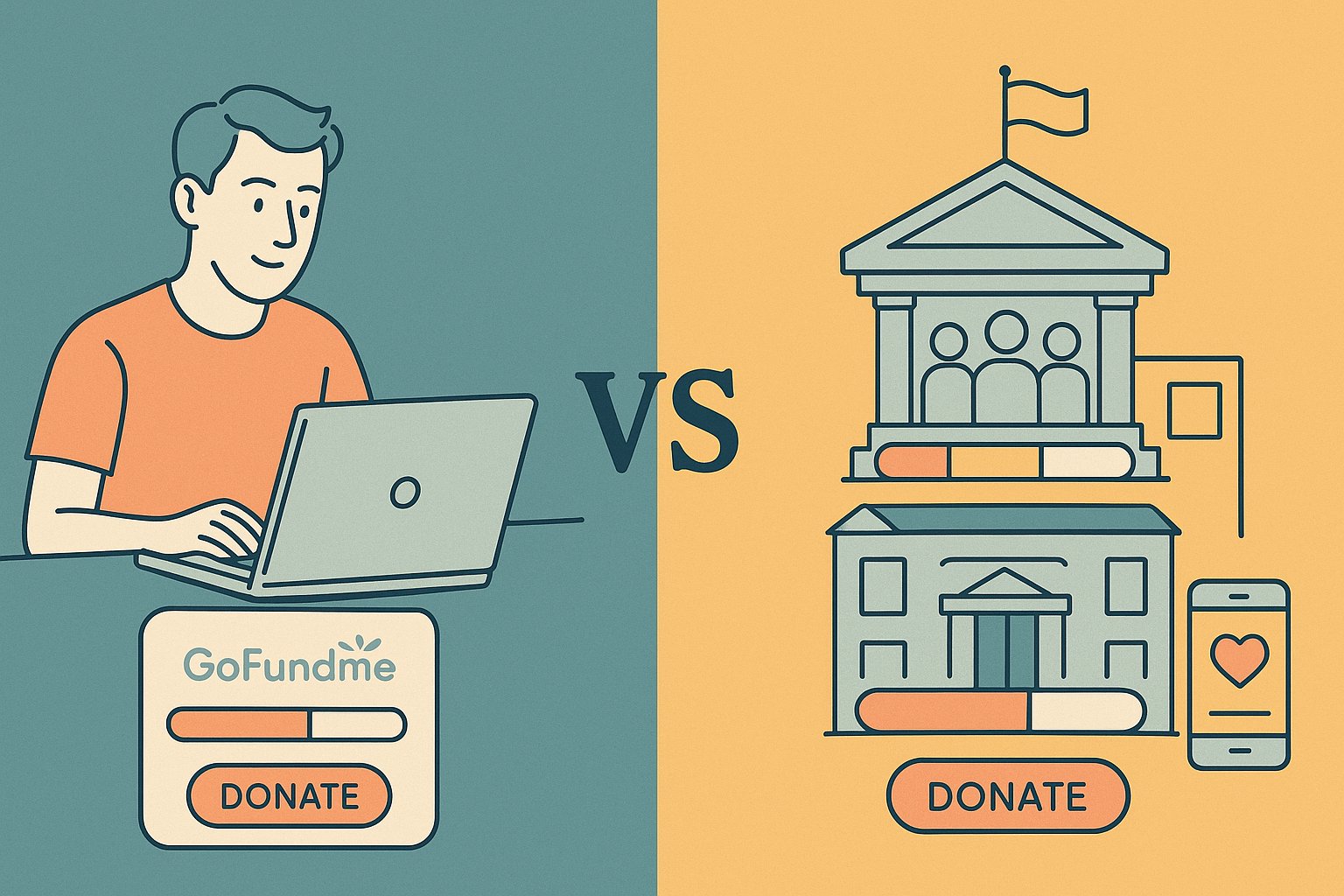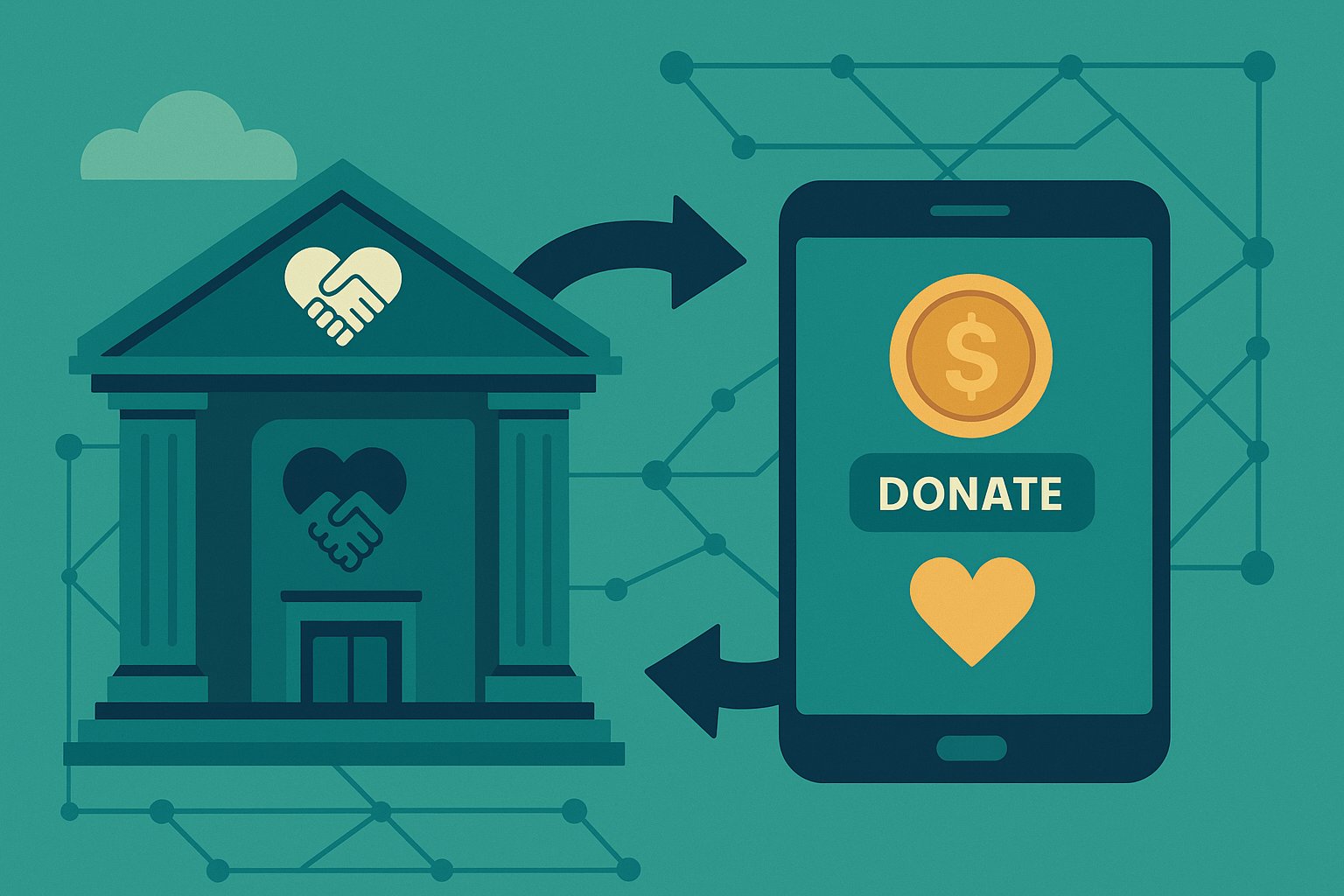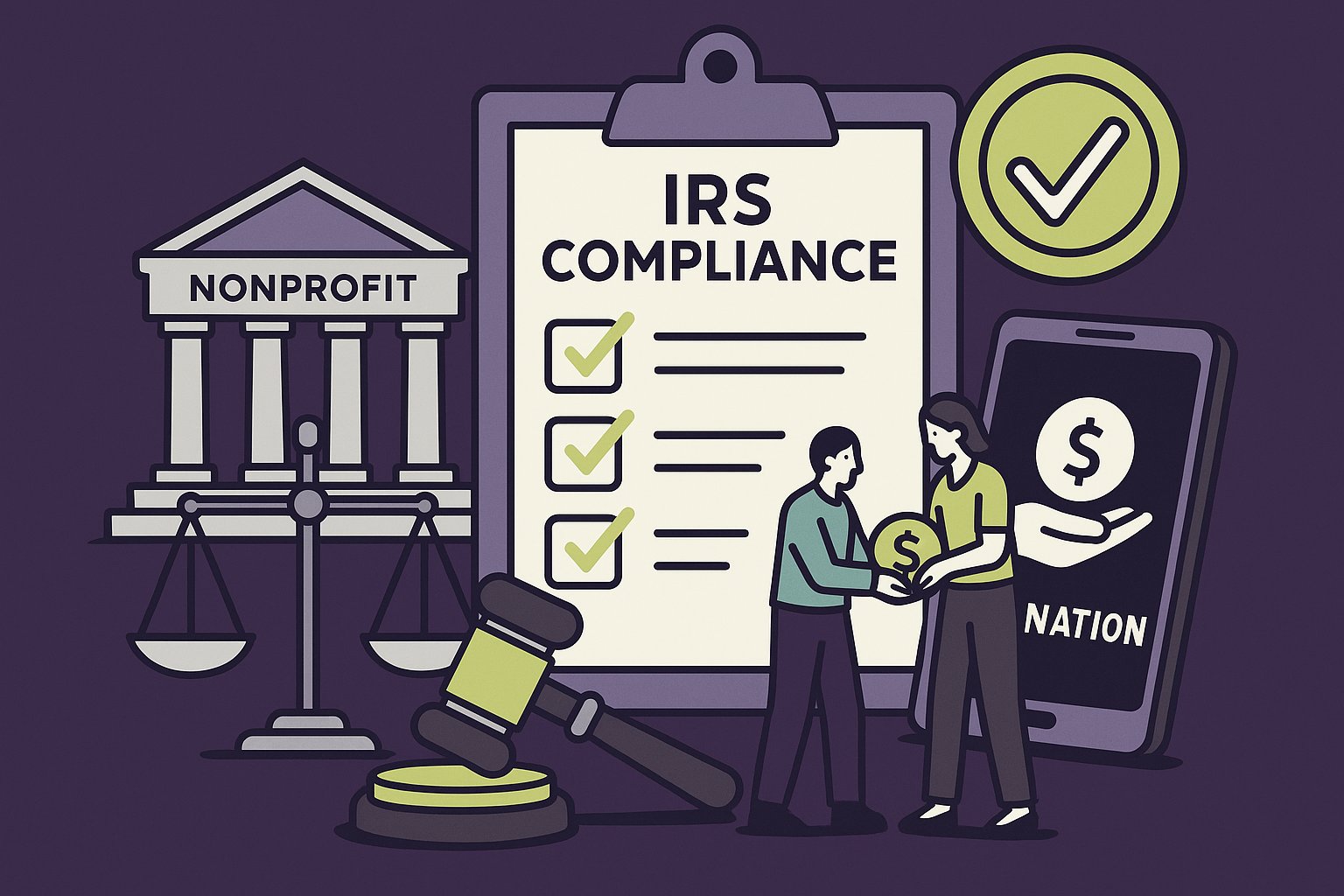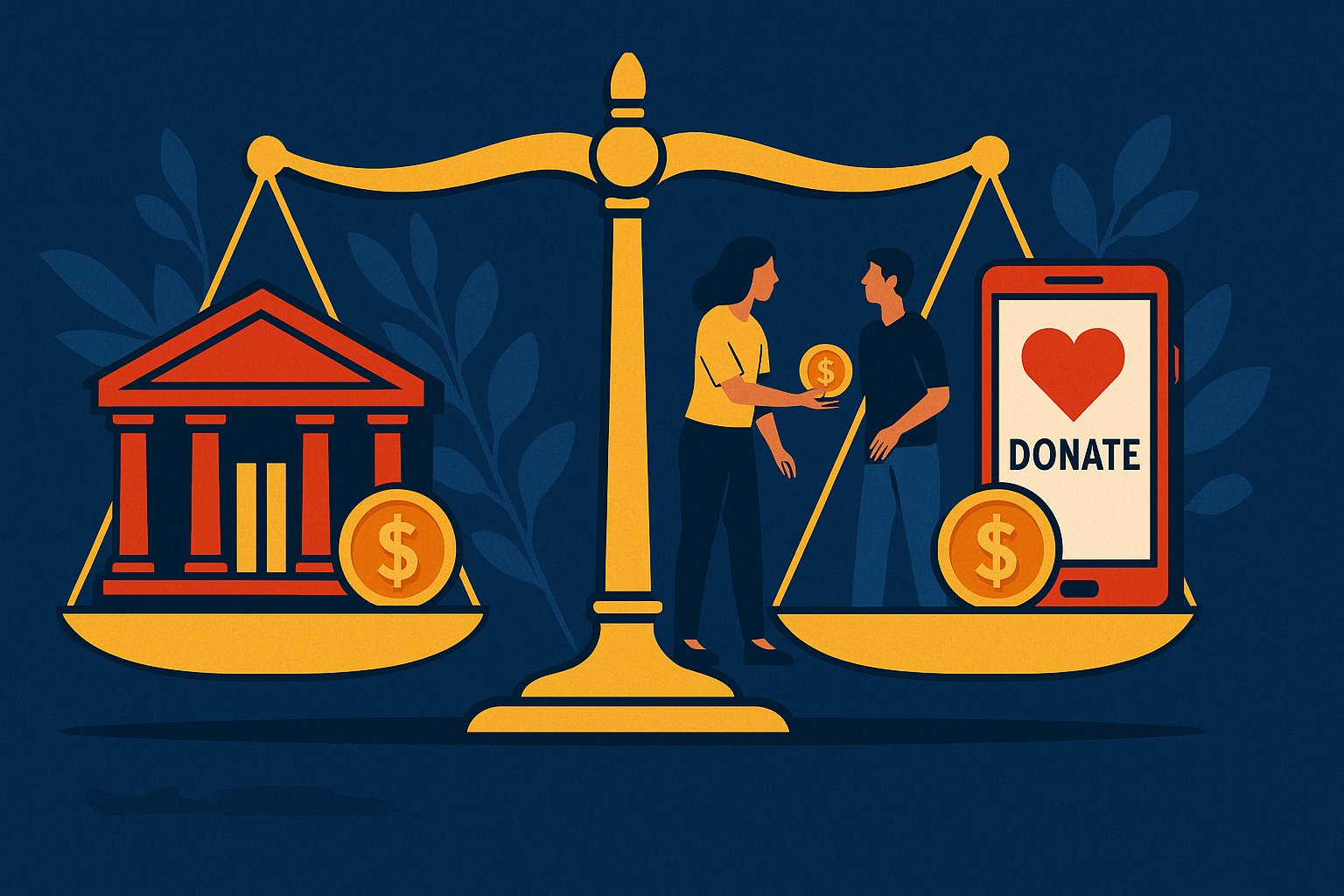Understanding the GoFundMe Landscape
Crowdfunding has reshaped how individuals and organizations raise money for causes that matter—whether it’s helping a friend cover unexpected medical bills or supporting a nonprofit’s new community center. At the forefront of this movement is GoFundMe, a platform that enables anyone to launch a fundraising campaign with just a few clicks. However, not all GoFundMe pages are created equal. There are two primary campaign types: personal campaigns and charity campaigns. Each model serves distinct goals, appeals to different donor motivations, and follows different rules. By grasping the key differences between personal and charity campaigns, fundraisers can choose the best path for their goals, communicate more effectively with supporters, and ultimately maximize their impact.
Diving into Personal Campaigns: The Human Connection
Personal campaigns on GoFundMe put an individual’s story front and center. Often sparked by pressing, time-sensitive needs—such as medical expenses, funeral costs, or emergency relief—a personal campaign thrives on emotional resonance. The beneficiary might be a friend, family member, or community member in crisis. In a personal campaign, the fundraiser sets up a page using their own name or the name of the person in need, paints a vivid picture of the situation, and invites donors to rally around a human story. It’s not uncommon to see pages titled “Help John Fight Cancer” or “Emergency Relief for the Garcia Family.” These campaigns tap into empathy and urgency, leveraging photos, videos, and heartfelt narratives that showcase raw vulnerability. Donors often give out of personal connection or compassion, feeling they are directly helping someone they care about.
Exploring Charity Campaigns: Structured Philanthropy
In contrast, charity campaigns on GoFundMe are designed for registered nonprofit organizations. Rather than centering on an individual, these campaigns support structured, mission-driven initiatives—such as building wells in developing regions, funding educational programs, or providing shelter to homeless families. To launch a charity campaign, an organization must complete GoFundMe’s verification process, proving its 501(c)(3) status or equivalent nonprofit registration in its country. This verification grants access to additional features—like lower payment processing fees and access to tax receipt generation—ensuring that donors can claim tax deductions for their contributions. Charity campaigns often use professional branding, logos, and detailed project outlines. They appeal to donors who prioritize strategic philanthropy and long-term impact, rather than immediate personal relief. Rather than a plea for emergency aid, these pages highlight mission statements, program goals, and evidence-based outcomes.
Fee Structures: Comparing Costs and Benefits
A critical difference between personal and charity campaigns is the fee structure. On a personal campaign, GoFundMe charges a standard payment processing fee—typically 2.9% plus $0.30 per transaction in the U.S. There are no platform fees, but donors have the option to add a tip to support GoFundMe’s operations. In essence, the “platform fee” is voluntary, and campaign organizers only have the processing costs deducted from each donation unless donors choose to cover those costs themselves. Conversely, charity campaigns benefit from reduced processing fees—often 2.2% plus $0.30 per transaction in the U.S.—and can offer tax-deductible receipts to donors. This slight reduction may seem minimal on individual donations, but when a nonprofit processes larger sums or hundreds of gifts, the savings on processing fees can be substantial. Moreover, charities can integrate donor management tools, track gift designations, and manage recurring gifts more seamlessly than personal fundraisers.
Verifying Legitimacy: Building Donor Trust
Trust is a cornerstone of successful fundraising. Personal campaigns achieve credibility primarily through authentic storytelling and social proof—comments, shares, and endorsements from friends and community members. However, because anyone can start a personal campaign, potential donors may hesitate if they cannot independently verify the beneficiary’s identity or assess the urgency of the need. To address this, many personal fundraisers include medical bills, letters from doctors, or news articles to substantiate their story. In contrast, charity campaigns undergo a formal verification process before they launch: GoFundMe requires nonprofits to upload legal documentation, article of incorporation, and proof of tax-exempt status. This third-party authentication reassures donors that 100% of their contribution will be used for the stated mission. The platform also displays a green “Verified Charitable Organization” badge on approved campaigns, signaling to supporters that the fundraiser has passed a thorough vetting process. Consequently, donors often feel more confident giving to charity campaigns, especially for larger gifts.
Withdrawal and Payouts: Smooth vs. Structured Transfers
Personal campaigns offer straightforward withdrawals: once a donation clears—usually within 2–5 business days—the organizer can transfer funds to a linked bank account at any time. There is no minimum threshold, allowing individuals to withdraw even a small balance as soon as it’s available. This flexibility is ideal for families facing urgent bills, as they can access funds quickly to cover hospital costs, travel expenses, or funeral arrangements. For charity campaigns, payouts are similarly fast, but GoFundMe may disburse funds on a more structured schedule aligned with nonprofit banking needs. Some charities choose to accumulate funds until they reach a specific threshold—say, $500—before initiating a transfer, simplifying accounting and reducing transaction costs. Additionally, because verified charities can leverage GoFundMe’s donor management features, they often integrate payouts with their broader financial systems, ensuring accurate record-keeping for audits and annual reports.
Tax Implications: Deductibility and Reporting
One of the most compelling advantages of charity campaigns is tax deductibility. When donors give to a verified nonprofit, GoFundMe automatically generates a tax receipt that includes the donation amount, date, and charity’s legal name—features that ease end-of-year tax filing and incentivize mid- to high-level contributions. Donors often plan their giving according to tax brackets, making them more likely to give generous gifts if they can claim a deduction. Personal campaigns, on the other hand, do not offer tax-deductible receipts because those donations are considered personal gifts by the IRS and other tax authorities. If an individual tries to claim those gifts as charitable deductions, the IRS may disallow them unless the recipient is a qualified charity. This lack of deductibility can deter some donors—especially higher-net-worth individuals—who rely on strategic philanthropy to minimize taxable income. Thus, if a fundraiser anticipates attracting donors motivated by tax incentives, a charity campaign may be the better route.
Storytelling Approaches: Personal Urgency vs. Mission-Driven Narratives
Personal campaigns lean heavily into storytelling that conveys immediate urgency. Phrases like “within the next 24 hours” or “critical surgery scheduled” create a sense of time-sensitive need that prompts quick action. Donors feel they are part of a rescue mission—someone’s life or livelihood hangs in the balance. This high-emotion appeal can result in rapid fundraising spikes, especially when amplified by social media shares. However, personal campaigns must refresh their narratives over time to sustain momentum; once the initial wave of empathy subsides, fundraisers often need to post updates—photos of the beneficiary’s recovery, transcripts of gratitude, or news about new financial pressures—to keep donors engaged.
In charity campaigns, storytelling tends to focus on mission-driven impact and long-term transformation. Rather than a single individual’s need, the narrative might emphasize systemic change: “This nonprofit has provided clean water to 10,000 households in rural Kenya. With your support, we can build three new community wells this year.” The language highlights vision, sustainability, and accountability. Donors see their contributions piling up toward a measurable total—like “$50,000 to plant 5,000 trees”—which fosters a sense of shared achievement. Periodic updates might showcase program success stories, beneficiary testimonials, or interim metrics that demonstrate progress. This constantly evolving narrative keeps donors invested not only in the fundraising target, but also in the cause’s broader outcomes.
Donor Perception: Emotional vs. Strategic Giving
When prospective supporters browse GoFundMe’s homepage, they see both personal and charity campaigns side by side. Their decision to give often hinges on donor perception. Personal campaigns appeal to donors who want to make a deeply personal connection: they might know the individual directly, share a mutual friend, or simply feel drawn to that unique story. Their donations are rooted in immediate empathy—an instinctive desire to help a friend or stranger who is suffering. This can result in smaller, one-time gifts that multiply through social sharing.
Charity campaigns attract donors with strategic giving mindsets. These supporters often research the nonprofit’s mission, track record, and financial stewardship before committing funds. They want assurances that their gift will be used effectively, whether that means feeding thousands of meals, providing scholarships, or supporting scientific research. Their donations may be larger, recurring, or even pledged as corporate sponsorships. They tend to give through a donor-advised fund, match gifts from employers, or leverage their networks to host peer-to-peer events. For them, giving is not a purely emotional act, but a calculated investment in social impact.
Campaign Duration: Fast-Paced vs. Sustained Efforts
Personal campaigns frequently operate on an accelerated timeline. A sudden accident, unexpected diagnosis, or natural disaster often triggers immediate, intense giving followed by a tapering off once the urgent need is addressed. For example, a personal medical fundraiser might welcome thousands of donations in the first week due to social media virality, then slow down as the beneficiary receives necessary funds. Within a month or two, the campaign may be fully funded or close its target, allowing the organizer to focus on recovery rather than ongoing awareness. Success is measured by how quickly the necessary funds are gathered before any further emergency arises.
Charity campaigns, in contrast, often unfold over longer periods to support multi-phase projects or annual operating budgets. A nonprofit seeking $100,000 for a new after-school youth program might run its GoFundMe page year-round, combining it with traditional fundraising efforts like grant writing, major donor solicitations, and direct mail campaigns. Instead of a sudden spike, they see incremental growth as recurring donors renew gifts and new supporters discover the cause through search or outreach. The timeline can stretch across months or even years—updates highlight new partnerships, program milestones, and fresh goals. By pacing efforts sustainably, charities can leverage GoFundMe’s momentum as part of a larger donor cultivation strategy.
Design and Branding: Personal Touch vs. Formal Identity
Design choices on a GoFundMe page reinforce the campaign’s identity. Personal fundraisers often use candid photos—family snapshots or hospital bed selfies—to reinforce authenticity. Handwritten thank-you notes, personal signatures, and casual language further humanize the page. The layout is simple: a prominent headline, a heartfelt description, and a few key photos that illustrate the beneficiary’s journey. This down-to-earth aesthetic resonates with donors who value raw honesty over polished presentation.
Charity campaigns, on the other hand, typically adhere to formal branding guidelines. They upload high-resolution logos, professionally shot photographs of program beneficiaries, and custom banners that reflect their corporate identity. Their page descriptions feature precise mission statements and bullet-pointed program highlights. Some nonprofits embed infographics showing budget allocations or timelines for implementation. The tone is consistently professional, aiming to project organizational credibility. This design signals to prospective donors that they’re supporting an established institution with proven governance—key for attracting larger grants and major gifts.
Legal and Compliance Factors: Navigating Regulations
Both personal and charity campaigns must comply with GoFundMe’s terms of service, but the stakes differ. Personal fundraisers need to ensure they honestly represent their circumstances, as misrepresentation can lead to account suspension and potential legal consequences. For example, if someone raises money for a medical procedure but diverts funds to personal vacation expenses, they risk being flagged for fraud. GoFundMe’s fraud prevention team may freeze funds, refund donors, and cooperate with law enforcement if necessary. Clear documentation—medical receipts, legal affidavits, or insurance denial letters—minimizes these risks and reassures donors.
Charity campaigns face additional regulatory requirements. To maintain tax-exempt status, nonprofits must comply with IRS rules around charitable solicitation, donor privacy, and gift acknowledgement. They are responsible for issuing accurate donation receipts, reporting annual fundraising activity, and ensuring that funds raised on GoFundMe align with their exempt purpose. In some jurisdictions, state-level registration for charitable solicitation is required if the nonprofit raises funds above a certain threshold. Failure to comply can jeopardize tax benefits for donors and expose the nonprofit to fines. Therefore, charities often involve legal counsel or compliance officers when launching a GoFundMe page, integrating it seamlessly into their broader fundraising infrastructure.
Choosing the Right Path: Key Considerations for Fundraisers
Deciding between a personal campaign and a charity campaign hinges on several factors. If your cause revolves around an urgent, individual need—a sudden accident, critical surgery, or unexpected hardship—a personal campaign is likely the most efficient route. The emphasis on emotional storytelling and rapid disbursements makes it ideal for meeting short-term goals. However, if you represent a nonprofit organization or plan for ongoing community initiatives, a charity campaign is the logical choice. The ability to offer tax-deductible receipts, lower processing fees, and a verified nonprofit badge will attract donors who demand accountability and long-term impact.
Another consideration is donor motivation. If your network responds best to personal appeals—close friends, extended family, or local communities—then a heartfelt personal campaign can rally support quickly. But if you must cultivate broader donor segments—such as corporate sponsors, foundation grants, or high-net-worth individuals—a charity campaign provides the professional infrastructure and credibility needed to secure larger gifts. Finally, consider your capacity for post-campaign stewardship. Personal campaigns require weekly updates, family involvement in communications, and immediate fund distribution logistics. Charity campaigns demand robust donor management systems, detailed reporting, and ongoing engagement strategies to retain supporters long after the initial goal is met.
Maximizing Impact: Best Practices Across Both Models
Regardless of the campaign type, certain best practices remain universal. First, invest time in crafting a compelling narrative that balances urgency with hope. Even a charity campaign benefits from humanizing elements—showcase individual beneficiary stories within the broader mission. Next, diversify your outreach channels: share your GoFundMe link across social media, email newsletters, community forums, and local media outlets. Use targeted keywords—such as “urgent medical fundraiser,” “support local nonprofit,” or “tax-deductible donation”—to improve SEO and attract organic traffic.
Consistent updates keep donors engaged and demonstrate accountability. For personal campaigns, upload a follow-up video or photo after a major milestone—like completing a medical procedure—to reinforce transparency. For charity campaigns, share quarterly impact reports or highlight volunteer testimonials to illustrate ongoing work. Foster personal connections by promptly thanking each donor—whether with a private message, an email, or a public shout-out. Lastly, track metrics rigorously: monitor daily donation trends, conversion rates from different sharing channels, and average gift size. Use this data to refine your messaging, timing, and outreach efforts.
The Future of Crowdfunding: Evolving Trends and Opportunities
As crowdfunding continues to evolve, GoFundMe remains a dominant player, adapting to emerging donor behaviors and technological innovations. Personal campaigns are becoming more multimedia-rich, incorporating livestream fundraising events and interactive Q&A sessions that humanize beneficiaries in real time. Charity campaigns are integrating peer-to-peer fundraising tactics, where dedicated board members or ambassadors launch their own mini-campaigns under the nonprofit’s umbrella to mobilize new networks. Additionally, hybrid models—where a verified nonprofit partners with an individual fundraiser—are emerging as a way to combine personal urgency with institutional credibility. For example, a personal story about a family’s medical need can be hosted under a nonprofit’s umbrella to offer tax deductions and access to broader donor channels.
Looking ahead, GoFundMe’s introduction of recurring donation options, matching gift features, and advanced analytics tools will further blur the lines between personal and charity campaigns. Donors increasingly expect seamless giving experiences—one-click payment gateways, transparent fee breakdowns, and social sharing incentives. By staying attuned to these trends, fundraisers can position their campaigns to capture the next wave of charitable generosity.
Charting Your Course: Making the Right Choice
In a world where financial needs can arise unexpectedly and causes span the gamut from personal emergencies to global crises, GoFundMe offers unparalleled flexibility. Personal campaigns provide a lifeline when urgency strikes, giving individuals the power to rally their communities quickly. Charity campaigns enable structured philanthropy, offering rigorous accountability and tax advantages that attract strategic donors. By understanding the key differences—ranging from fee structures and verification processes to narrative styles and donor motivations—fundraisers can choose the model that best aligns with their objectives. Whether you’re seeking to support a loved one’s medical treatment or to fund an ongoing charitable initiative, GoFundMe’s platform equips you with the tools to transform empathy into action. Armed with best practices and insights into donor psychology, you’re ready to launch a campaign that resonates, engages, and propels your mission forward.




